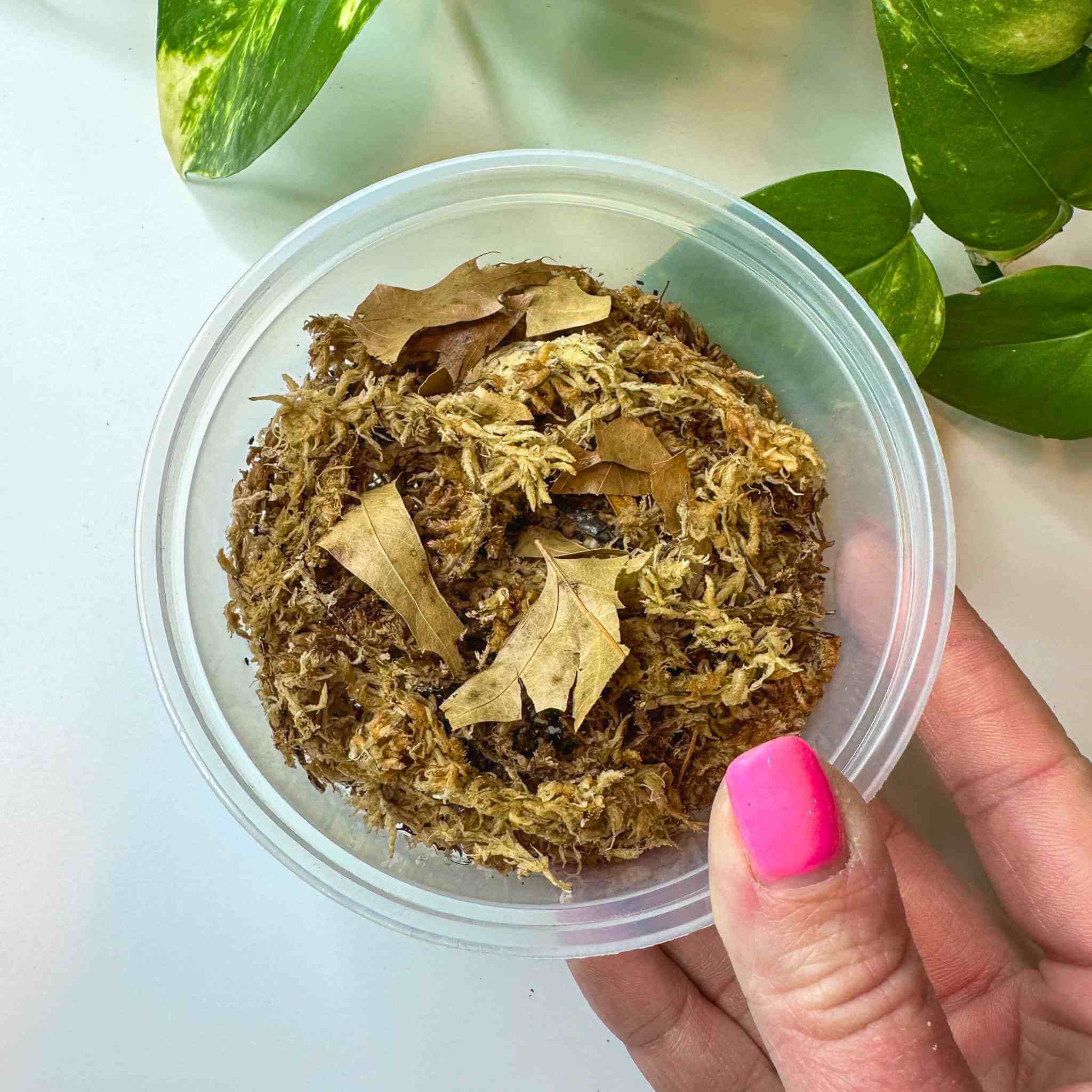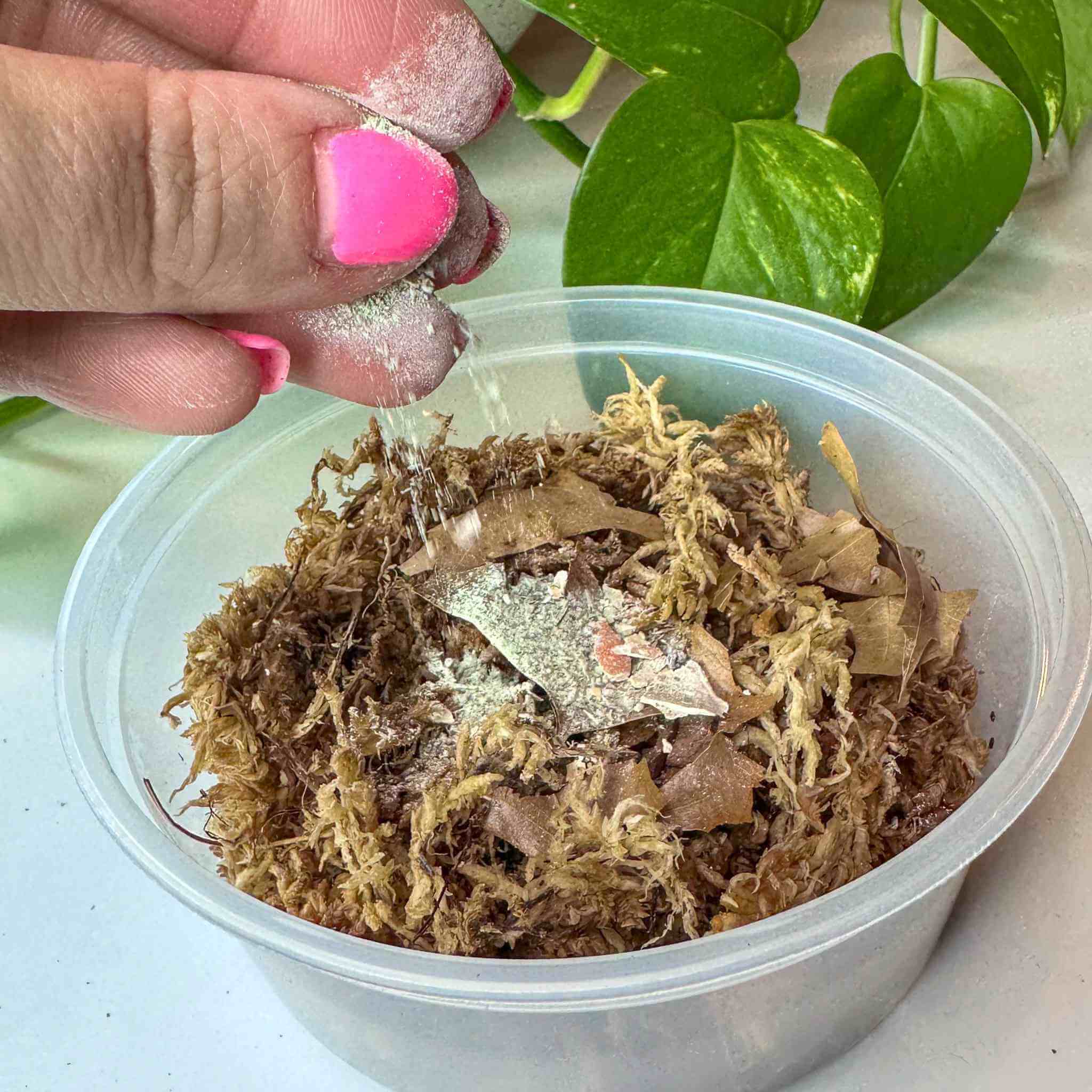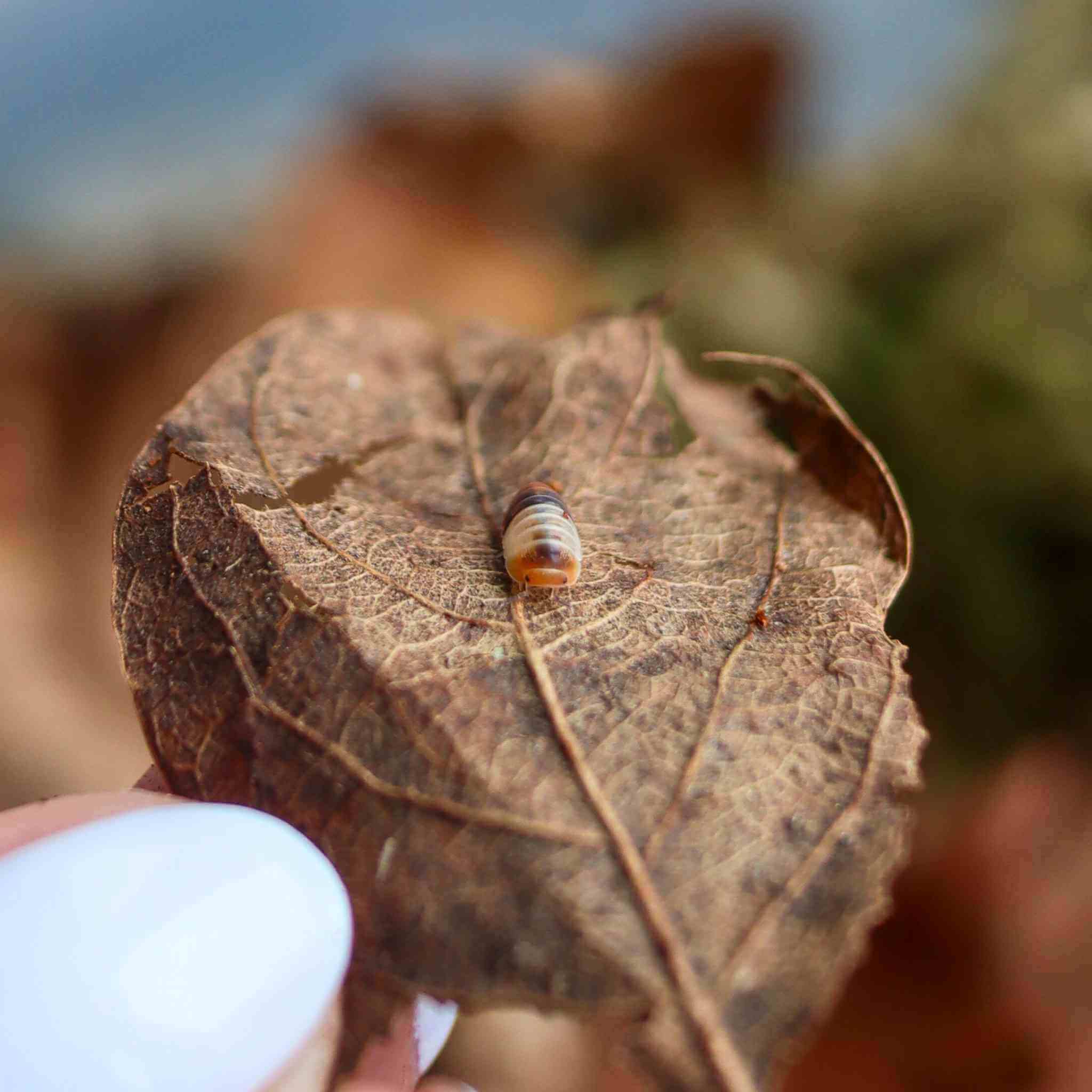
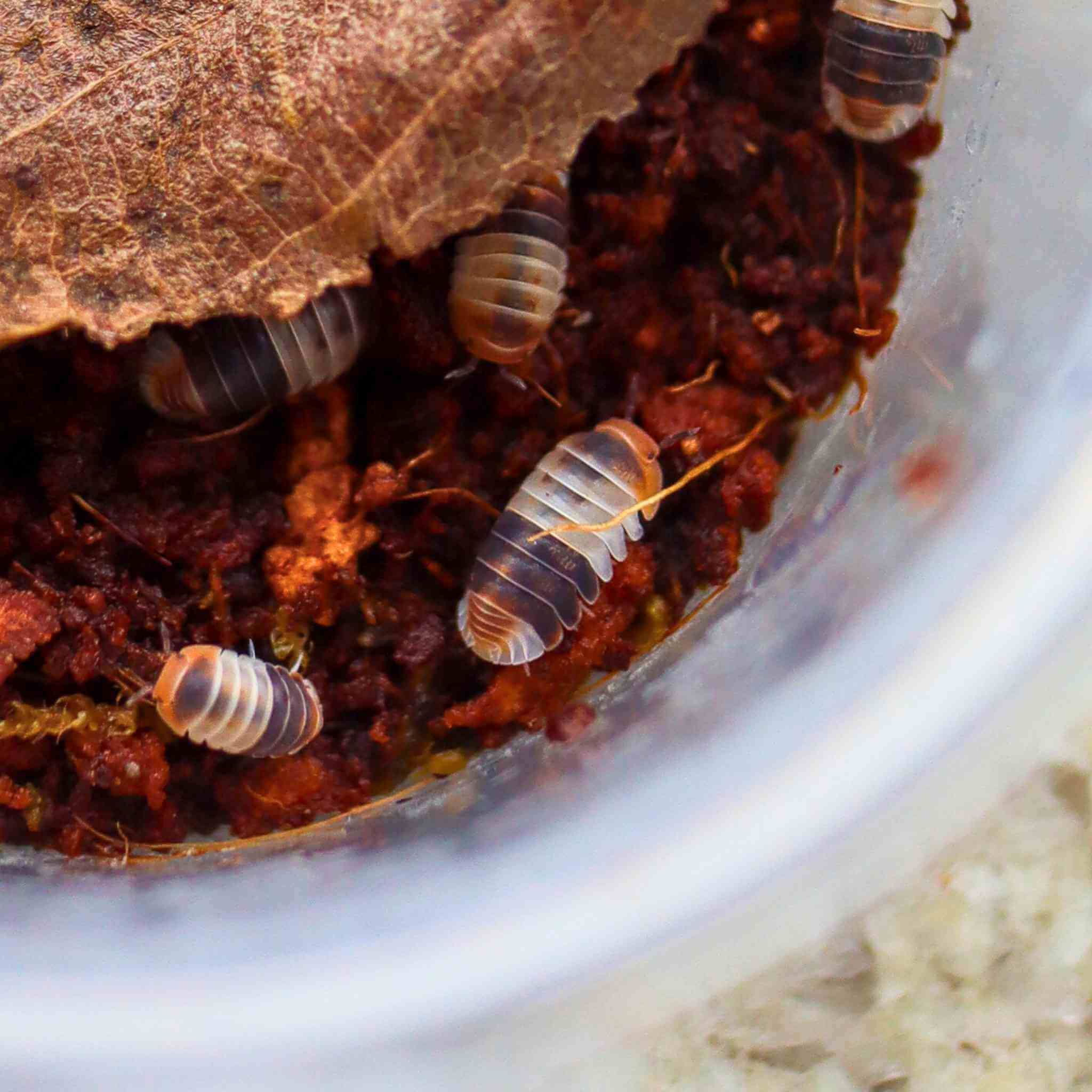
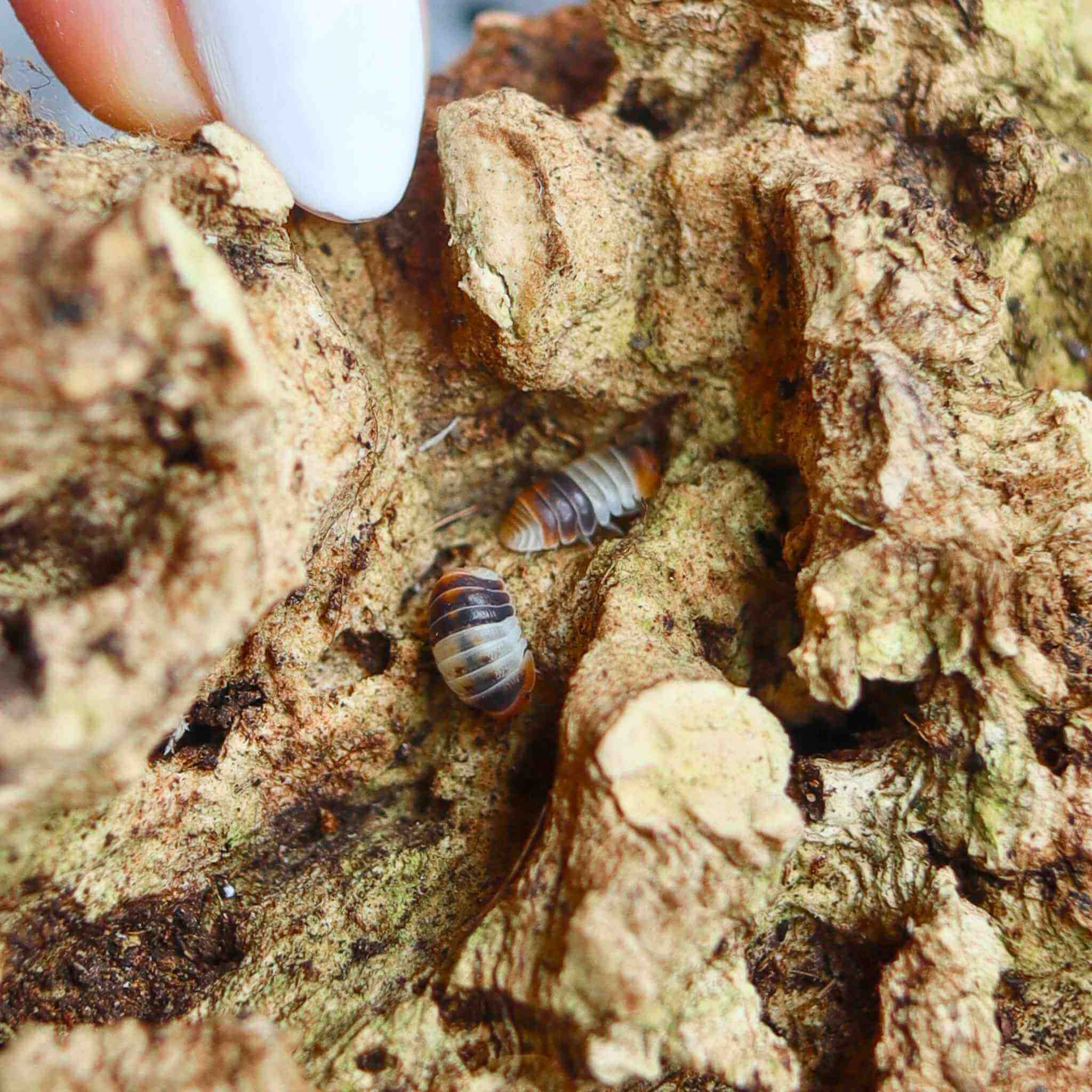
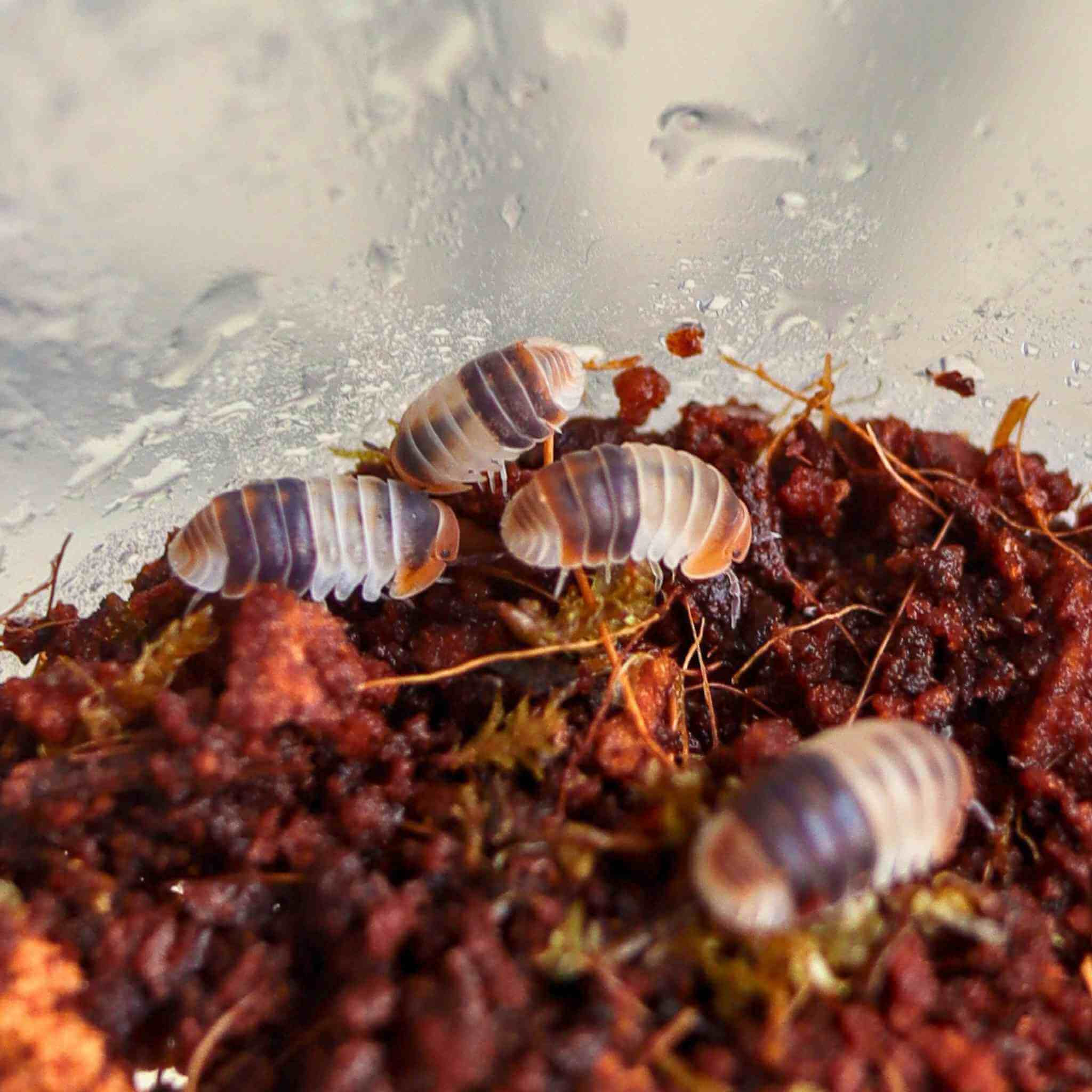
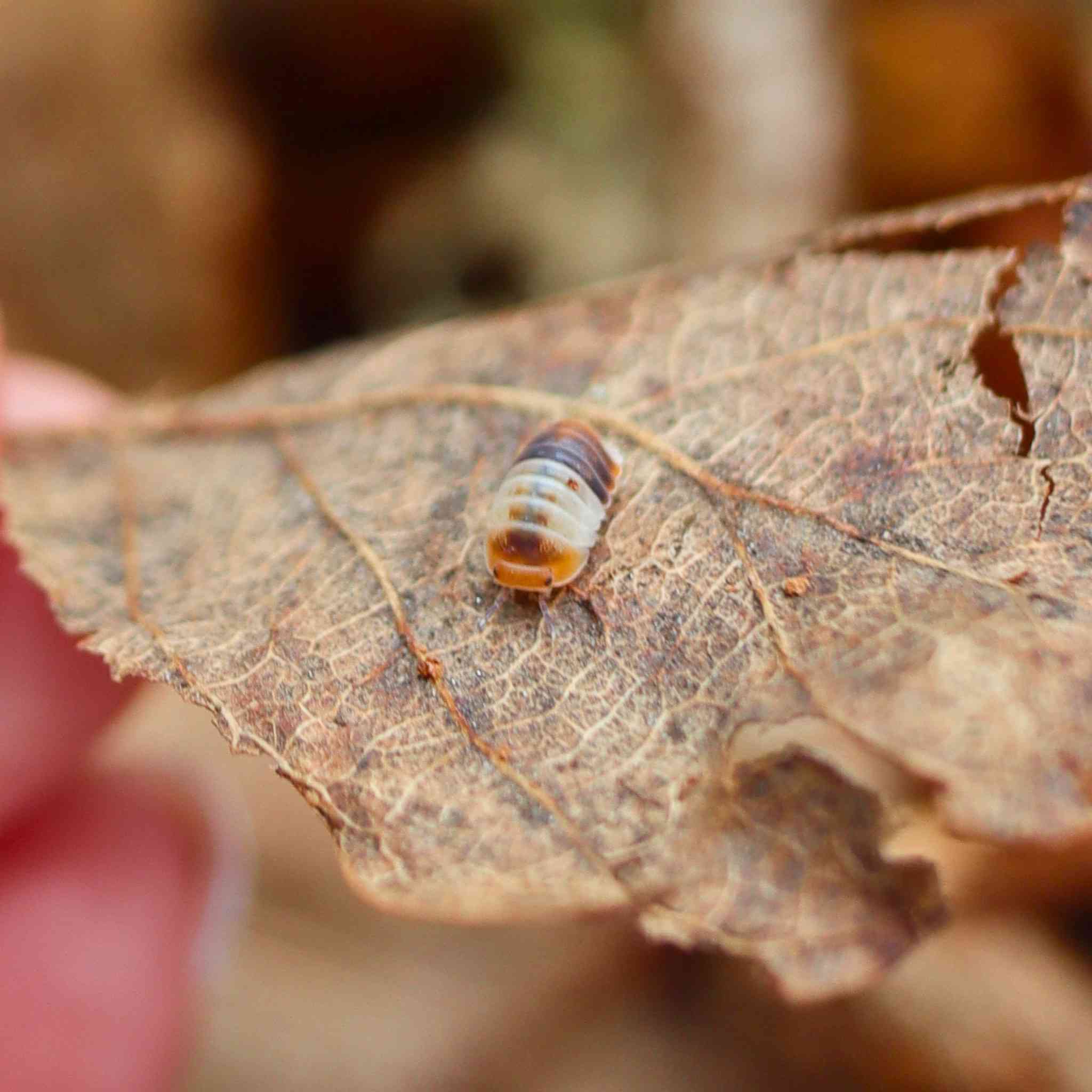
White Shark Isopods (Dwarf Cubaris sp.) 10 Count
New to the hobby, these tiny dwarf duckies are a real game-changer. With all of the personality of the classic Cubaris species in an adorable package half the size, they're perfect for smaller terrariums and pet cultures.
Get a head start on your culture goals! We exclusively ship adult designer isopods, so you can skip the wait to get them breeding.
📦 We ship live goods on Mondays & Tuesdays. Check out our live arrival guarantee! (+ how to qualify).

White Shark Isopods
Care Specs & Uses
Tropical | Temperate
Pet
75-80º Fahrenheit
High
Less than 1cm
Intermediate
FAQ
White Shark Isopod questions? We've got you.
Check out the most common questions our customers ask. Have questions about something else? See our dedicated FAQ page!
Do I need to feed my isopods? How much/how often?
A staple diet of leaf litter is essential, so you’ll need to provide a regular supply. White Shark Isopods also appreciate a calcium-rich food source, so a pinch of our Superfood powder is recommended every 4 days or so.
If keeping these in a bioactive terrarium, you can likely reduce your feeding frequency. See our full guide to isopod food for more information.
How much space do isopods need?
Being such a tiny dwarf isopod, a standard 10 count will probably need a container size of just a gallon or more.
Do isopods need ventilation?
For isopods in closed terrariums we always recommend looser fitting lids and regularly opening for feeding to maintain some level of air exchange. When kept in culture boxes, our isopod partners, RDI, suggest that regularly opening for watering/feeding alone may provide enough ventilation.
Alternatively, drilling holes in the plastic culture container is a popular method in the hobby, though it makes it more difficult to maintain the necessary humidity levels (and brings an increased risk of pests).
Do these isopods need water/moisture?
How frequently you need to spray your isopod enclosure will depend on the species, the setup, and the ambient humidity in your home. RDI recommends every 3-4 days as a loose rule of thumb (checking daily for the first week after receiving them).
These isopods are a species that prefer a high-humidity setup, so they will lean towards more regular watering.
Naturally, isopods in tropical terrariums should have no need for extra moisture top-ups beyond watering your terrarium (as long as you’re maintaining tropical conditions).
What should I do when my isopods arrive?
We recommend opening your order immediately after it arrives and checking them over. For best results, put your isopods into their new home right away; we recommend gently tipping them in along with the contents of the tub.
If that’s not possible, isopods can stay in the tub they’re in for up to a week, provided they have a leaf litter supply and you open the tub up at least every 2 days minimum for air exchange.
Can isopods climb glass?
Generally speaking, isopods cannot climb glass. Some isopods are better climbers than others and may be able to climb cracks and/or dirty glass to some extent (but Cubaris species aren't particularly... agile).
What’s the difference between a clean up crew isopod and a pet isopod?
Clean up crew isopods are species selected for their large appetites and high activity, making them particularly good at breaking down and recycling organic matter in a terrarium.
Pet isopods are those that are especially interesting to look at, but waste management skills and terrarium suitability vary from species to species.
White Shark Isopods are arguably a happy medium for both small and large terrariums alike.
Do I still need springtails if I have isopods in a terrarium?
Springtails and isopods serve different functions in a terrarium, with springtails primarily tackling mold and isopods breaking down larger decomposing organic materials.
While neither are strictly necessary, they individually bring a number of benefits and offer even more as a bioactive combo working synergistically together.
Cubaris species may not be the best cleanup crews, but they're still a good fit for tropical terrarium setups, so we'd still recommend you buy springtails too.

